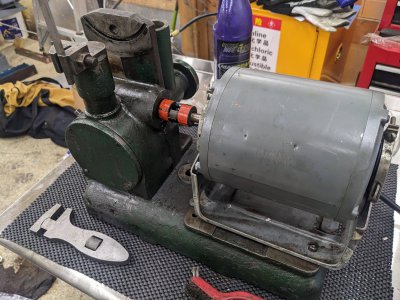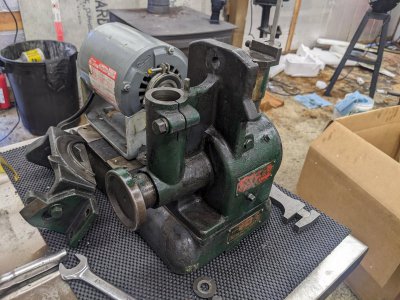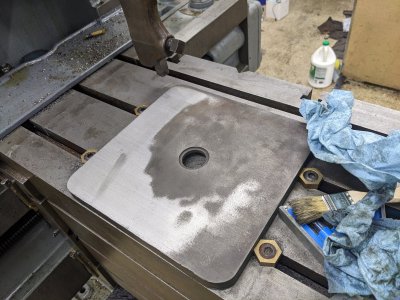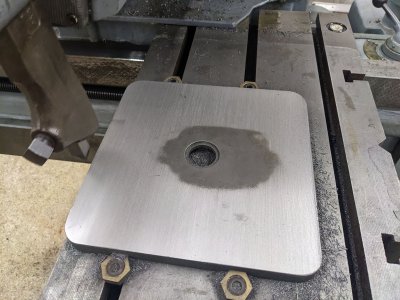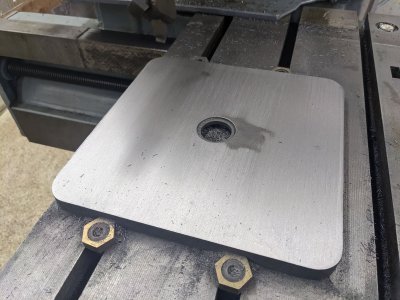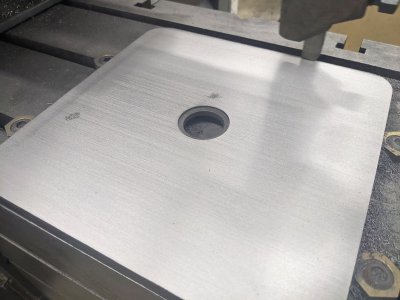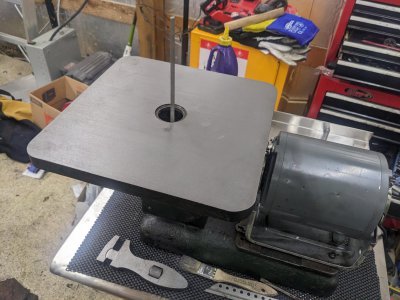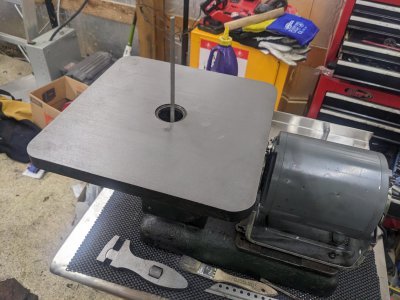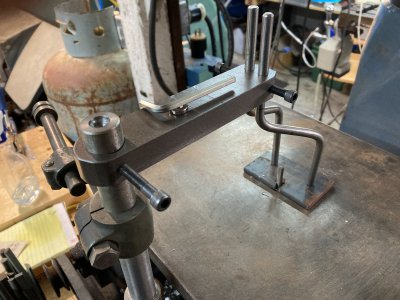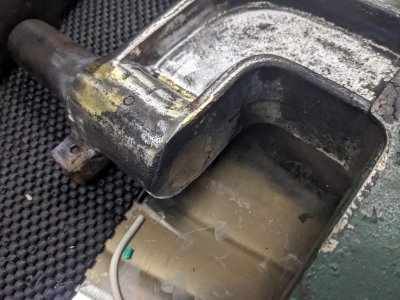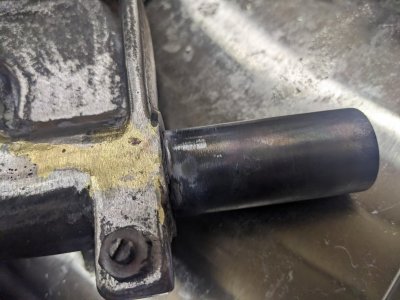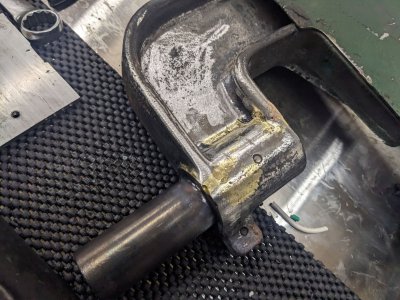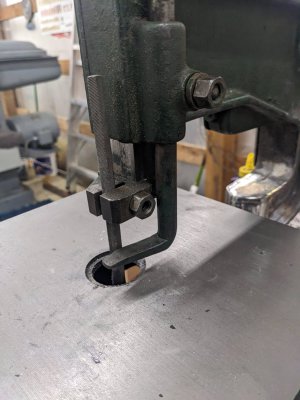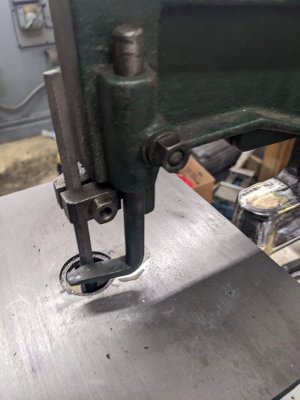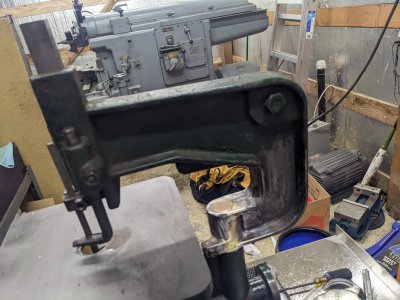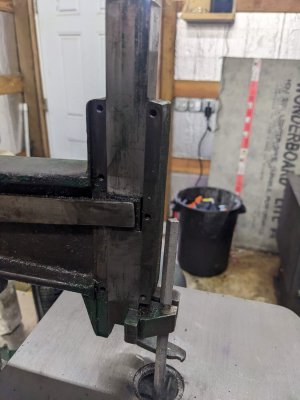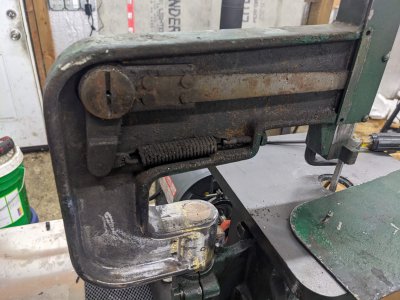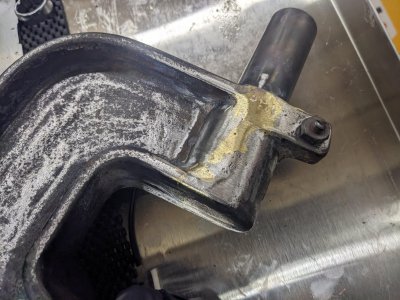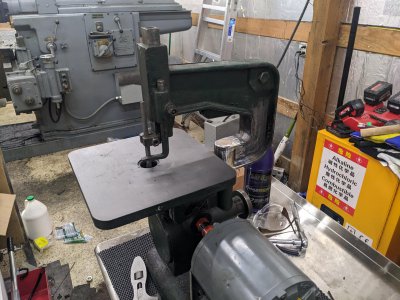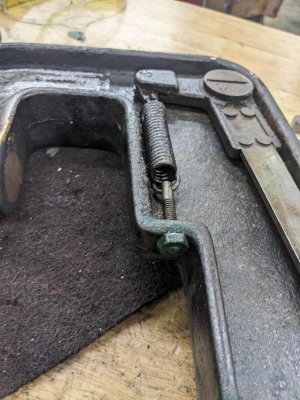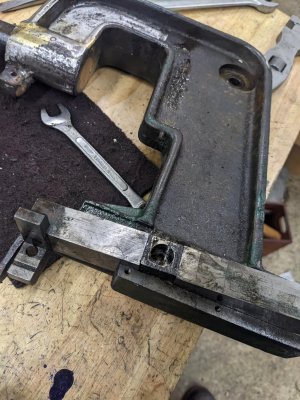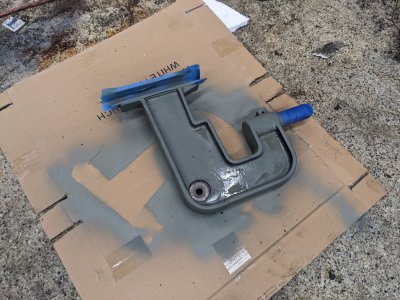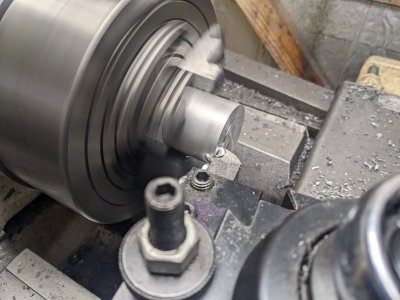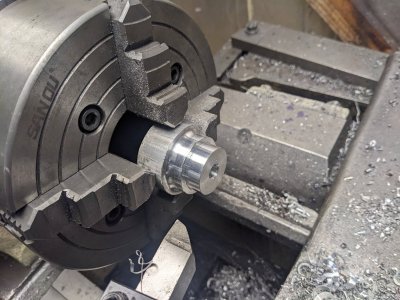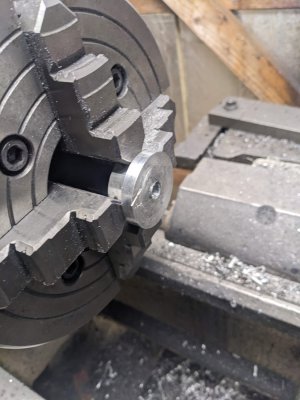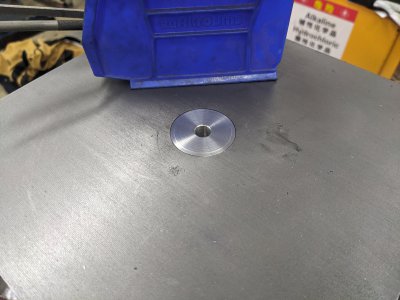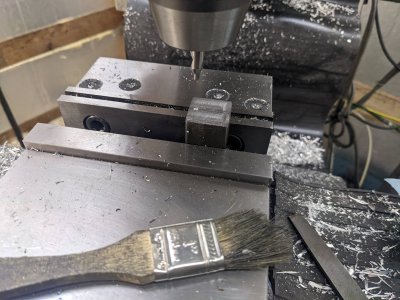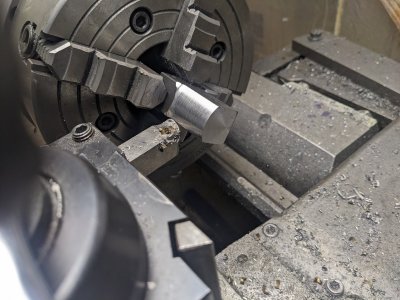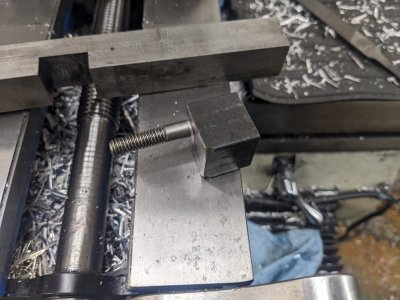- Joined
- Aug 3, 2017
- Messages
- 2,437
While waiting on the power feed on my mill to clean up a block of aluminum for another project, I decided to break down the die filer to see how much work it'll be.
The motor bracket looks like it /the motor aren't made for it, and someone added two bolt holes to hold down the bracket.
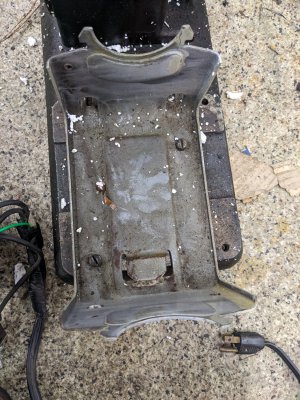
As you may remember, the motor fell off the bracket during shipping. It was damaged by "spreading outward" to the point the motor no longer lined up. SO I pulled it off, cleaned it with some WD40 and a shop towel, and put it on the arbor press. I was able to bend it back just about perfect:
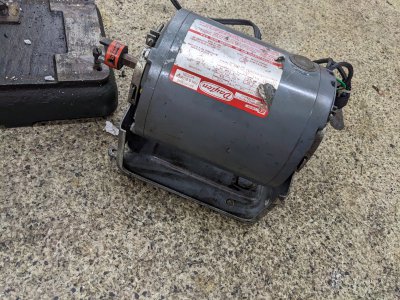
I'm still going to rewire the motor/do something different with the switch, but at least it mounts correctly.
The table was held on by a single T bolt/nut combo:
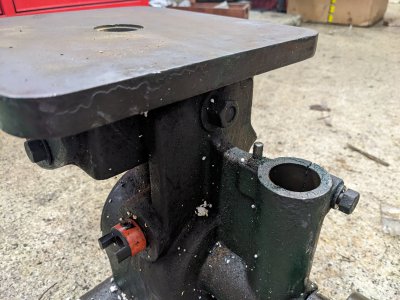
The underside of the table looks in really good shape, just dirty. Everything seems right! I'll end up cleaning this better when I put the machine back together. Though, I have no idea what those three holes on the far side are for...
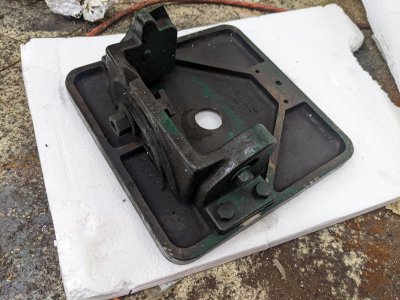
The body bolts with 3 bolts to the base. The annoying part is 1 was too close to the edge to use a socket in. It came off easy enough anyway.
One nice thing, the bottom of the shaft/bearing is enclosed! This means it shouldn't leak too bad.
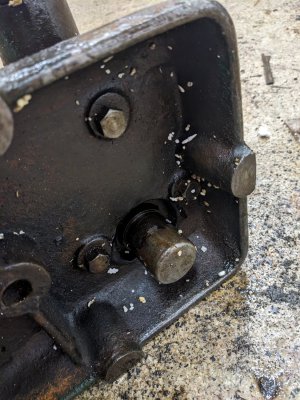
And, removed:
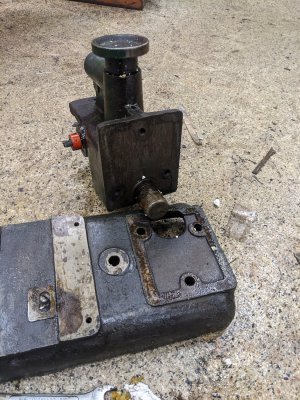
Next, I removed 4 REALLY tight and buggered screws for the main case face:
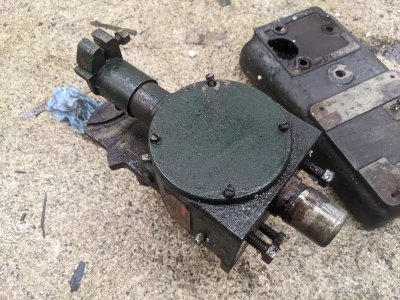
I drained the oil, but it looked like pretty new motor oil, some heavy viscosity. The REALLY nice part is the inside is nice and clean, and tight. I thought I'd have to tear this down and replace a bearing somewhere, but there is zero play on anything!
I think I'll make a gasket for the face, oil it, and run it as is.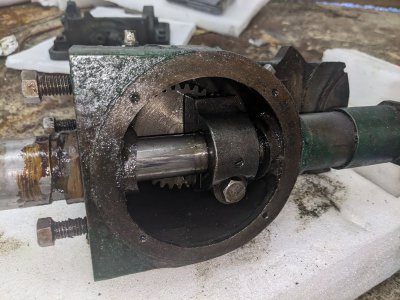
The outside itself needs a good clean, and had a mediocre paint job in it's past. I'll likely just hit it with a wire wheel enough to clean it, but probably not enough to paint it, depending on how well the paint survives cleaning.
Overall, I'm hopeful that once the welder has his way with the arbor support, this won't be too much work to put back in service.
The motor bracket looks like it /the motor aren't made for it, and someone added two bolt holes to hold down the bracket.

As you may remember, the motor fell off the bracket during shipping. It was damaged by "spreading outward" to the point the motor no longer lined up. SO I pulled it off, cleaned it with some WD40 and a shop towel, and put it on the arbor press. I was able to bend it back just about perfect:

I'm still going to rewire the motor/do something different with the switch, but at least it mounts correctly.
The table was held on by a single T bolt/nut combo:

The underside of the table looks in really good shape, just dirty. Everything seems right! I'll end up cleaning this better when I put the machine back together. Though, I have no idea what those three holes on the far side are for...

The body bolts with 3 bolts to the base. The annoying part is 1 was too close to the edge to use a socket in. It came off easy enough anyway.
One nice thing, the bottom of the shaft/bearing is enclosed! This means it shouldn't leak too bad.

And, removed:

Next, I removed 4 REALLY tight and buggered screws for the main case face:

I drained the oil, but it looked like pretty new motor oil, some heavy viscosity. The REALLY nice part is the inside is nice and clean, and tight. I thought I'd have to tear this down and replace a bearing somewhere, but there is zero play on anything!
I think I'll make a gasket for the face, oil it, and run it as is.

The outside itself needs a good clean, and had a mediocre paint job in it's past. I'll likely just hit it with a wire wheel enough to clean it, but probably not enough to paint it, depending on how well the paint survives cleaning.
Overall, I'm hopeful that once the welder has his way with the arbor support, this won't be too much work to put back in service.


